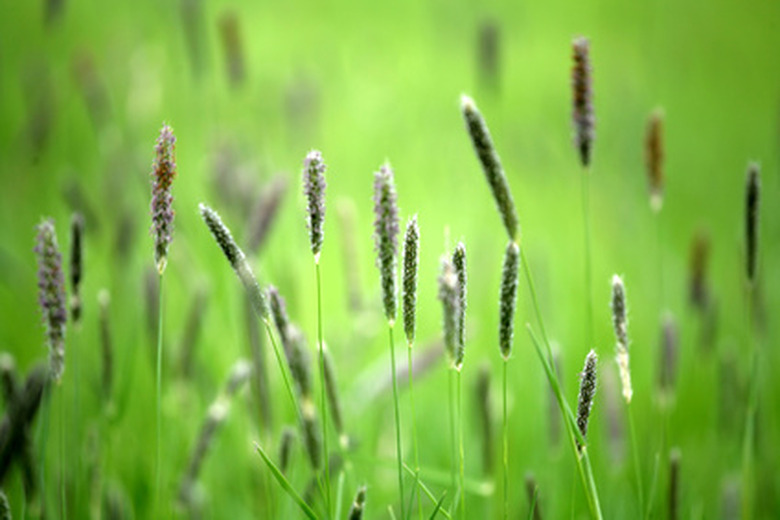How To Spread Buffel Grass Seed
Buffel grass is an annual to perennial grass reaching a height of up to 60 inches. It is an invasive grass with great drought tolerance, but is also known to withstand flooding with little to no damage. Buffel grass is often used as pasture grass in hot, dry climates of the world, but is most commonly found in North America in fields or on roadsides.
Step 1
Store buffel grass seeds prior to sowing. Recommended storage time is a minimum of six months and up to 18 months for the greatest germination success.
Step 2
Mix the fluffy seeds with a fine-textured soil to weight it down. It is recommended to use larger seeds, as they have a higher germination rate.
- Buffel grass is an annual to perennial grass reaching a height of up to 60 inches.
- Buffel grass is often used as pasture grass in hot, dry climates of the world, but is most commonly found in North America in fields or on roadsides.
Step 3
Prepare the seed bed. Till the soil to a depth of 4 inches with a rototiller to loosen the soil.
Step 4
Sow the seed mixture to a depth of just under 1 inch. Use a seed broadcaster and spread the seed at a rate of 13 lbs. of seed per acre.
Step 5
Irrigate the soil immediately after sowing the buffel grass. Keep the soil moist to encourage germination, which should begin within 24 hours of planting.
- Till the soil to a depth of 4 inches with a rototiller to loosen the soil.
- Keep the soil moist to encourage germination, which should begin within 24 hours of planting.
Step 6
Water the buffel grass regularly to encourage growth. The buffel grass will become established in nine to 12 months.
Grass To Seed Out
Stop mowing the grass in the area that you want to let seed out. In dry conditions, water the grass as needed to ensure that it continues to grow and thrive. Wait for the seed heads to develop completely and begin drying out. Harvest the seeds by grasping the stalk with one hand and sliding the fingers of the other hand up the stalk and over the seed heads; provided that the heads are fully developed, the seeds will come loose between your fingers. Mow the lawn after harvesting the seeds, setting the blade high so that you remove no more than one-third of the grass height in the first cut. Store harvested grass seed in a cool, dry location.
- Water the buffel grass regularly to encourage growth.
- Mow the lawn after harvesting the seeds, setting the blade high so that you remove no more than one-third of the grass height in the first cut.
Things Needed
- Fine-textured soil
- Rototiller
- Seed broadcaster
Warning
Buffel grass is not suited to heavy, clay soils. It prefers light soils, such as sand or sandy-loam.
